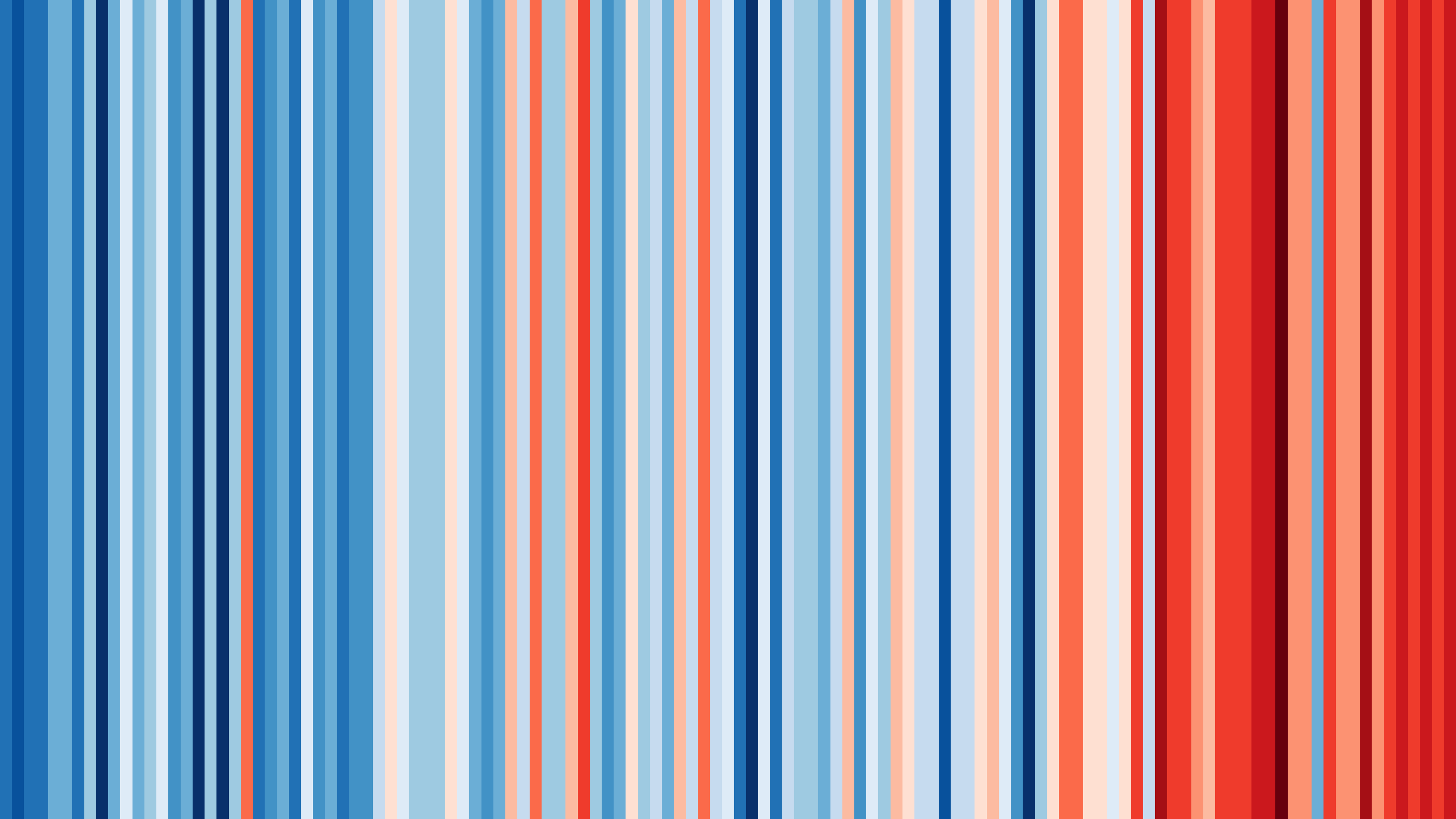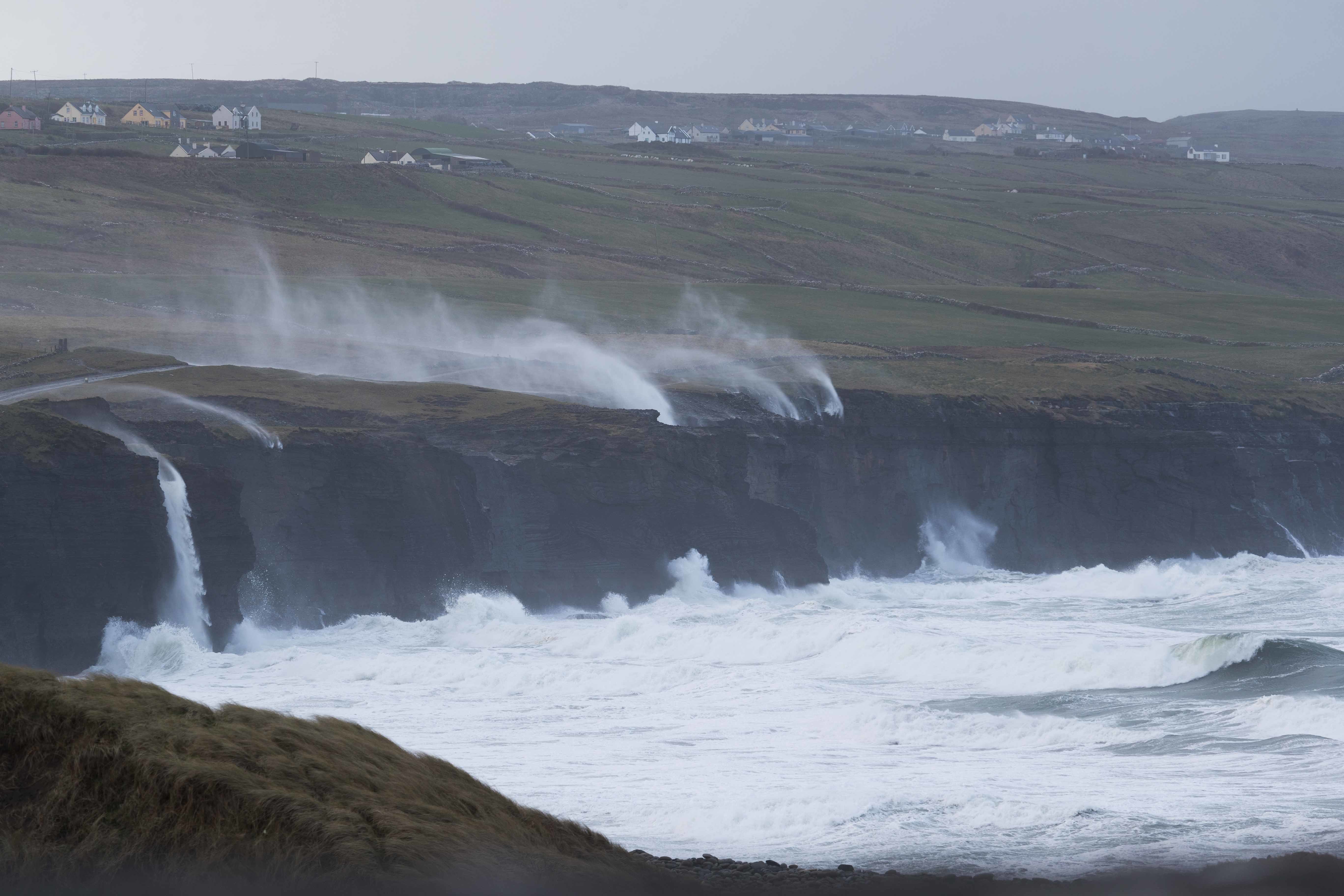On St Patrick’s Day, striking visual shows how much Ireland’s temperature has risen in 120 years
Using shades of red and blue, the stripes show where temperatures were higher or lower

A striking visual representation has shown how much temperatures have risen in Ireland over the past 120 years.
The graphic was tweeted on St Patrick’s Day by Professor Ed Hawkins, who is behind the “Show Your Stripes” project at the University of Reading in the UK.
Using shades of red and blue, the stripes illustrate where temperatures were higher or lower in a given year than the average for the period as a whole.
Ireland’s stripes turn increasingly from dark and light blue to a deep red, representing the temperature rise from 1901 to 2021.
The Emerald Isle’s average temperature is changing in line with global climate trends (the world has warmed around 1.1C since the pre-industrial era).
Compared to 1900, the temperature in Ireland has increased by about 0.8C on average, the country’s environment agency reports, and will continue to rise in the coming decades (by how much depends on how fast the world curbs carbon emissions).
Overall, the number of warm days is expected to increase and heat waves will be more frequent. In Ireland, 2019 was the ninth consecutive year with temperatures above normal.
The warming stripes have become popular in recent years as more focus is placed on climate change, and even inspired a range of Covid face masks which were seen at the Cop26 summit. Using the data tool, warming stripes can be created for more than 200 countries using the latest temperature data.
In a statement, Professor Hawkins said that the warming stripes support the findings of the recent assessments from the Intergovernmental Panel on Climate Change (IPCC), the world’s most authoritative body on the crisis.
The latest chapter of the IPCC report found that the opportunity to secure a livable future for all is fast disappearing due to the climate crisis, and that even incremental rises by a 10th of a degree is worsening powerful storms, droughts, fires and floods.
“I hope that presenting the latest evidence in a clear and accessible way will again encourage people to think about the course the world is on, and how we can change that,” he added.
While impacts are being felt the most severely in the developing nations and in large swathes of the Global South, green and temperate climates like Ireland will not escape changes due to global warming.

The frequency of heavy rainfall events is expected to increase approximately 20 per cent during the winter and autumn months by mid-century. At the same time, the number of frost days are declining.
And the unprecedented and accelerating global sea level rise in the past 100 years will also take a toll on the island nation.
“All major cities in Ireland are in coastal locations subject to tides, any significant rise in sea levels will have major economic, social and environmental impacts,” the Irish meteorological service, Met Eireann, reports.
“Rising sea levels around Ireland would result in increased coastal erosion, flooding and damage to property and infrastructure.”
And while there is rising waters at sea, the water stress for crops, pressure on fresh water supply and adverse impacts on water quality will increase.
The number of very intense storms is projected to increase over the North Atlantic region, and projections show that they may track further south and over Ireland more often.
During Cop26, the Irish government laid out its Climate Action Plan which is targeting a 51 per cent reduction in greenhouse gas emissions by 2030. The €125bn ($139bn) plan will be funded with money from the public and private sectors.
Join our commenting forum
Join thought-provoking conversations, follow other Independent readers and see their replies
Comments

Bookmark popover
Removed from bookmarks